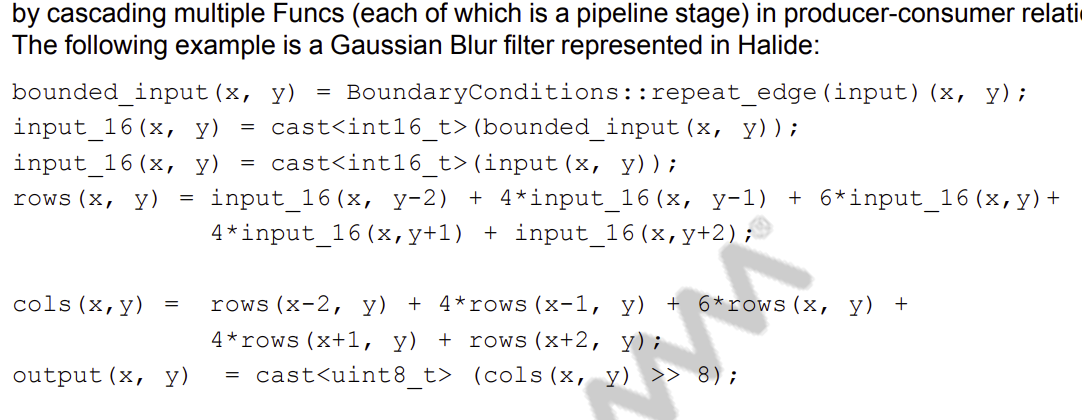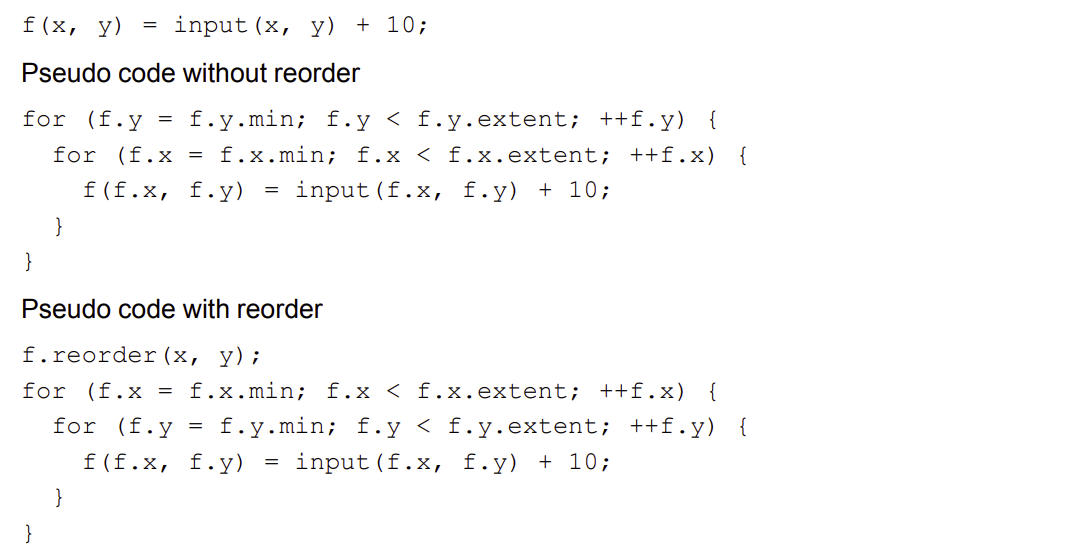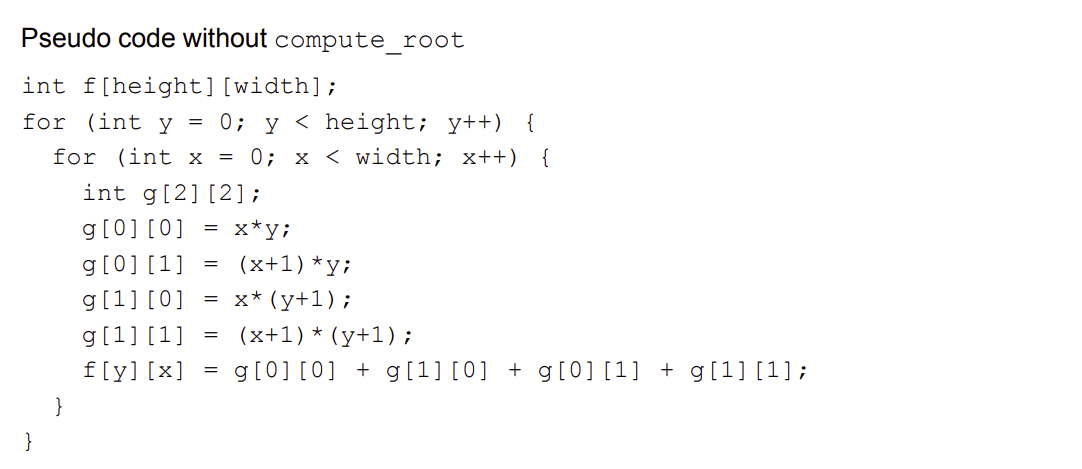Errors in Qualcomm documentation on Halide for HVX
Introduction
Qualcomm has a user guide called Halide for HVX (Hexagon Vector eXtension). The documentation is a great guide to both halide and HVX. I learned many things from the it.
But, besides all the good stuff, I found a couple of mistakes in the documentation which in the beginning confused me. I had to validate some of those to ensure if I had a wrong understanding before. Probably you did too?
I am writing this article, assuming:
- If someone goes through the same, they can look it up and find some updates here.
- If Qualcomm Hexagon folks read this doc, they can fix the document and let me know.
In this article I’ll assume you are aware of Halide and Qualcomm’s DSP called Hexagon. Halide has a first class support for generating instructions supported on hexagon called HVX or Hexagon Vector eXtension. If you are not familiar with Halide and are just curious, you can start here.
If you are from Qualcomm and in a position to fix the documentation - please do and let me know. Once again, thanks for the documentation.
Update: I heard back from Qualcomm team, these issues have been addressed. See more context on the update below. I’m keeping this article as is considering its still the document that shows up first in Google search on the topic.
Issues
Here are a few issues observed.
Additional update in the example
In page 10, in the description of
Func.

The input_16 is assigned twice, the 2nd one seems wrong. It should be like this
bounded_input(x, y) = BoundaryConditions::repeat_edge(input)(x, y);
input_16(x, y) = cast<int16_t>(bounded_input(x, y));
rows(x, y) = input_16(x, y-2) + 4 * input_16(x, y-1)
+ 6 * input_16(x,y)+ 4 * input_16(x,y+1) + input_16(x,y+2);
// rest of the code.
Documentation of reorder()
In page 12, in the description of
reorder()directive.
Here, in the section Pseudo code with reorder it says
f.reorder(x, y); will generate

This is incorrect. The interface is
reorder(dim_inner, .., dim_outer)
Thus f.reorder(x, y) will generate opposite of what is shown.
f.reorder(x, y);
// Pseudocode with reorder()
for (f.y = f.y.min; f.y < f.y.extent; ++f.y) {
for (f.x = f.x.min; f.x < f.x.extent; ++f.x) {
f(f.x, f.y) = input(f.x, f.y + 10);
}
}
To generate the expected pseudocode (with x in outer loop and y in inner loop), the required schedule is:
f.reorder(y, x);
Documentation of compute_root, compute_at and store_at
In page 17, in the documentation of
compute_root()
Its documented that, pesudo code without compute_root() for
Func g("g");
g(x, y) = x*y;
f(x, y) = g(x, y) + g(x, y+1) + g(x+1, y) + g(x+1, y+1);
will generate something like

But without the explict schedule for intermediate Func be computed inline, something like
int f[height][width];
for (int y = 0; y < height; y++) {
for (int x = 0; x < width; x++) {
f[y][x] = x*y + (x+1)*y + (x+1)*(y+1) + (x+1)*(y+1);
}
}
Same issue was observed for
store_at()in page 18 andstore_rootat page 19.
I have a feeling this is intentionally done to make it easier to understand. Even if this is the case - it’s inaccurate.
Actions taken / Updates
4th May 2022I have sent emails tosupport.cdmatech@qti.qualcomm.com/halide@quicinc.com.(reference from the document). I’ll update this article in case there is some updates or response.5th May 2022I heard back from the lead from the Halide team at Qualcomm. Here’s the summary from the email:
Thank you very much for pointing out these errors. All except the first one have been fixed in subsequent release of the user guide. The version that you have got your hands on is a fairly old ver (Rev. B – the latest is Rev E). It is available on https://createpoint.qti.qualcomm.com/ (You’ll need to sign up if you don’t have an account already) Once you log in search for “Halide” in the search bar in the upper right corner.
Not only have we fixed these errors, but we have also enhanced the documentation considerably by diving deeper into some of the more nuanced concepts of Halide with particular focus on usage in the context of HVX. Additionally, the latest Qualcomm Halide distributions (starting v2.3.0) contain an HTML version of the User guide as well.
I have fixed the first problem (https://blog.minhazav.dev/errors-in-qualcomm-documentation-halide-for-hvx/#additional-update-in-the-example) in our repo and it should be available in our next release and in the next revision of the user guide.
References
All images in this post are screenshots of the pdf captured by the Author on 4th May 2022.
Want to read more such similar contents?
I like to write articles on topic less covered on internet. They revolve around writing fast algorithms, image processing as well as general software engineering.
I publish many of them on Medium.
If you are already on medium - Please join 4200+ other members and Subscribe to my articles to get updates as I publish.
If you are not on Medium - Medium has millions of amazing articles from 100K+ authors. To get access to those, please join using my referral link. This will give you access to all the benefits of Medium and Medium shall pay me a piece to support my writing!
Thanks!


